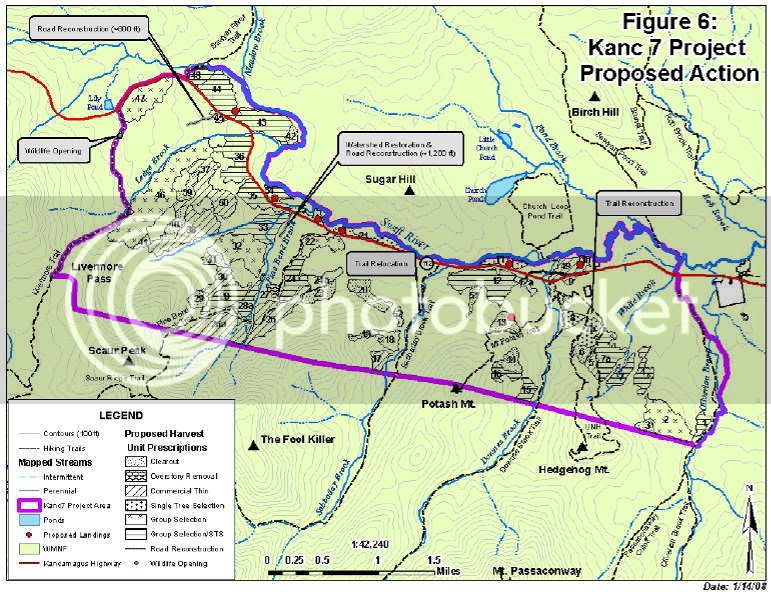psmart
Active member
The WMNF has just published details of the proposed "Kanc-7" timber project. The project area is primarily on the south side of the Kanc, from the Olivarian Brook Trail to somewhat beyond the Pine Bend Brook Trail. If you are concerned about any of the trails in the area, or views of this area from the summits, I urge you to read the "scoping report" and submit comments within the official 30-day period, which began yesterday, January 17th.
This page provides a link to the 39-page PDF file. I urge you to print it out and devote some time to reviewing it in detail, especially the maps.
http://www.fs.fed.us/r9/forests/white_mountain/projects/projects/assessments/kanc_7/kanc_7.htm
This page provides a link to the 39-page PDF file. I urge you to print it out and devote some time to reviewing it in detail, especially the maps.
http://www.fs.fed.us/r9/forests/white_mountain/projects/projects/assessments/kanc_7/kanc_7.htm

